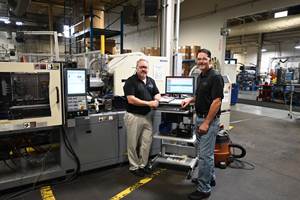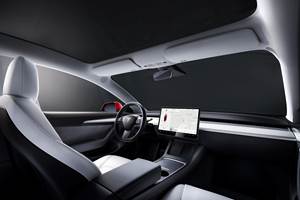Growth in Auto Production to Slow in 2016
Trends in leading indicators explain why.
The automotive industry has been fairly strong since 2010. Interest rates were low and incomes were improving, which spurred spending on motor vehicles and parts (MV&P). But the industry is likely to see its slowest growth since 2010 later in 2015 and into 2016. A look at the leading indicators explains why.
Real 10-Yr Treasury Rate: The real (inflation-adjusted) 10-yr Treasury Bond interest rate was 1.63% in June. The nominal rate is still only about a third of its historical average. However, inflation is historically low. The current annual average inflation is just 0.12% vs. a historical average of 4.15%. Therefore, the real Treasury rate is about two-thirds of its historical average. But low inflation is keeping real Treasury rates higher than in the recent past.
The Federal Reserve claims it will raise interest rates this year. However, with very low (or negative) inflation and a generally stable bond yield, it is likely that real 10-yr Treasury rates will continue to rise. Therefore, the trend in the real 10-yr rate is a negative sign for future automotive spending. Rising rates make cars more expensive. And, there are signs that new car sales have relied fairly significantly on sub-prime auto loans in 2015. Higher rates make it harder to find eligible sub-prime buyers.
Real Disposable Income: May’s real disposable income was roughly $12.3 billion (seasonally adjusted at an annual rate), an all-time high. In May, disposable income grew 3.5% compared with a year ago for the second month in a row. The current rate of annual growth was 3.1%. It appears that disposable income will see further accelerating growth over the next few months, but there are signs that it is nearing its peak rate of growth. While the trend in disposable income is a positive sign for automotive spending, it is likely outweighed by the trend in interest rates.
Real Motor Vehicle & Parts Consumer Spending: In May, real MV&P spending was at its highest level since July 2005 and its third highest level ever. Since 2010, the annual growth rate of spending has generally accelerated. In 2015, the annual rate of change in MV&P spending has grown at a rate of about 8.5%. The current rate of growth was more than double the historical average.. While the spending numbers are positive, the trend within the data indicates that spending is likely to grow at a slower rate in the near term.
Motor Vehicle & Parts Industrial Production: Automotive production tends to lag spending by up to six months. So, if the industry is entering a period of slower growth in spending, then MV&P production should see slower growth in 2016. Also, growth in production is likely to slow because the rate of growth in production since 2010 has been well above the rate of growth in spending (see chart).
Related Content
Injection Molded Enclosures Plug into Potential Electric Vehicle Battery Applications
In partnership with material suppliers, Engel is proving out injection molded thermoplastic-based concepts for electric vehicle battery housings, utilizing production tools and dedicated machines at its large press factory in St. Valentin, Austria.
Read MoreSkipping the Pellet for Efficient Recycling in Molded Engineering Plastics Applications
AGS Technology leverages deep experience in molding with recycled engineering materials for automotive and heavy equipment parts.
Read MoreAtop the Plastics Pyramid
Allegheny Performance Plastics specializes in molding parts from high-temperature resins for demanding applications as part of its mission to take on jobs ‘no one else does.’
Read MoreImpacts of Auto’s Switch to Sustainability
Of all the trends you can see at NPE2024, this one is BIG. Not only is the auto industry transitioning to electrification but there are concerted efforts to modify the materials used, especially polymers, for interior applications.
Read MoreRead Next
Making the Circular Economy a Reality
Driven by brand owner demands and new worldwide legislation, the entire supply chain is working toward the shift to circularity, with some evidence the circular economy has already begun.
Read MoreFor PLASTICS' CEO Seaholm, NPE to Shine Light on Sustainability Successes
With advocacy, communication and sustainability as three main pillars, Seaholm leads a trade association to NPE that ‘is more active today than we have ever been.’
Read MoreLead the Conversation, Change the Conversation
Coverage of single-use plastics can be both misleading and demoralizing. Here are 10 tips for changing the perception of the plastics industry at your company and in your community.
Read More.JPG;width=70;height=70;mode=crop)











